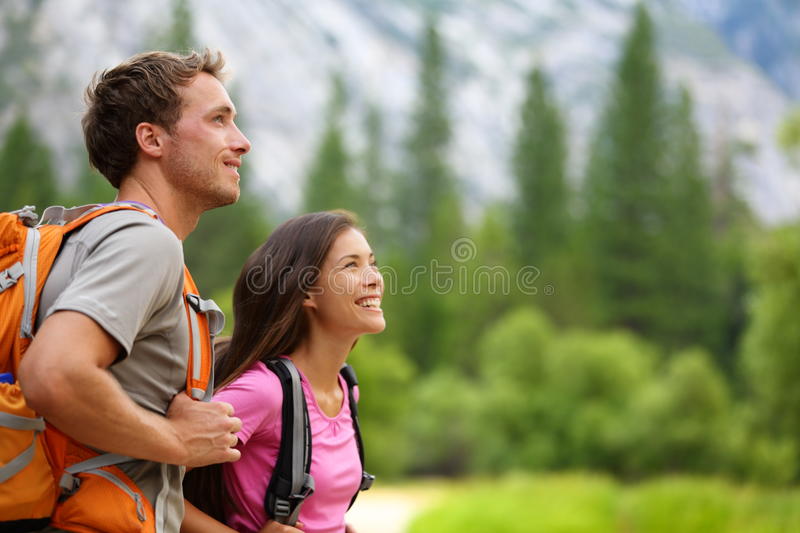
HIKING FOR BEGINNERS
When it comes to spending time in the great outdoors, nothing beats a day of hiking. Walking along forest trails or going to admire a waterfall nearby may seem a bit simplistic to beginners (especially if you look at all those pictures shared online), but the hike does not have to be a project. huge proportion.
For some hikes it is sufficient to put one foot in front of the other and follow the perfectly marked trail, while others are more difficult and require orientation skills. Before you jump in for the day, here’s where you need to start:
Table of Contents
Choose your hiking partners
If you’ve never hiked before, it is best to start with people who have experience. Ask a friend or family member who hikes if they would be willing to accompany you on an easy trail. You can also join a hiking group or club in your area.
If you are considering joining a group, review the planned trail to make sure it is suitable for your level of fitness. Are you unsure? Contact the hike organizer to ask questions before showing up at the meeting point.
Examine the trail before you go
The biggest challenge for any hiker is making the right choice at trail junctions and knowing where to find their way. Before you set off, be sure to examine a map and consult a guidebook to familiarize yourself with your chosen route. Try to anticipate the conditions of the trails you will be taking. For example, in the spring, many trails are covered with mud or snow. Towards the end of summer, water sources can sometimes run dry. You should always pay attention to details like stream crossings, drops, and trails that cross yours.
Share this information with members of your group so that everyone knows where the landmarks in the area are. When you are on the trail, look behind you as you pass a landmark or intersection for what to spot on the way back.
Estimate the duration of a hike
The time required to complete a given route depends on four main factors:
- the total distance
- the difference in height
- the type of terrain
- fitness level and group size
On flat ground, a rhythmic walking speed varies between 4 and 6 km / hour. Add half an hour for every 300 meters you gain in elevation. Travel time varies considerably depending on the difficulty of the terrain. It is much easier (and faster) to progress over dry, relatively uneven terrain than to walk on a path partially covered with rocks or shrubs. A steadily uphill and downhill trail will not only slow you down, but also make you more tired.
The number of people accompanying you and the physical condition of each are other important factors to consider in assessing the time you will take to complete the hike. Be prepared to move at the pace of the slowest person in your group and turn back if necessary. Remember to factor in the time for eating and using the bathroom.
The easiest way to maximize your hours of daylight walking is to get up as early as possible. When in doubt, be conservative and opt for half-day excursions on your first outings.
Before leaving
Check the trail conditions and weather forecast ahead of time, then check again the morning of your outing. You may need to adjust your plans or equipment accordingly. Be aware that in the mountains, weather conditions can change quickly and without warning.
Always let someone you know where you are going and when you think you are going to be back. Leave him a note or a detailed route plan that shows your route and the names of the people accompanying you. And don’t forget to warn him when you got home – there was a lot of unnecessary searching.
What to wear and bring on a hike
One of the things that makes this such an accessible outdoor activity is what little equipment you need for hiking.
- Start by getting a comfortable backpack. For day hikes, a 20L to 30L bag is usually adequate for your needs.
- Also bring the 10 essentials for hiking, even if you are not going for long. The goal of the 10 Essentials is to help you deal with an accident or emergency that could happen on the trails.
- Wear sturdy shoes. For flat, dry, light trails, a pair of trail running shoes will do the trick if you don’t have hiking boots. If the route is technical, long or the weather conditions are difficult, shoes or boots specially designed for hiking will better support your ankles and feet. Pack all these things in adventure bags from needtounplug or buy them from amazon
- Forget cotton socks. Blisters can ruin a day of hiking – wear socks made of synthetic fibres or wool (or wool-based blend) to keep your feet dry.
- Wear clothes that dry quickly. As your body will warm up during the climbs and cool down during the lunch break, it is essential to wear several layers. Discover the art of layering, and always bring a change of clothes – that’s one of the 10 essentials.
For all your gear requirements you can visit stores, such as Millets which specialize in hiking and outdoors equipment. You can find good deals, all around the year or at the very least look for promo codes such as millets discount code. Hiking gear can be a bit expensive, but in the long run it will do you much good.








